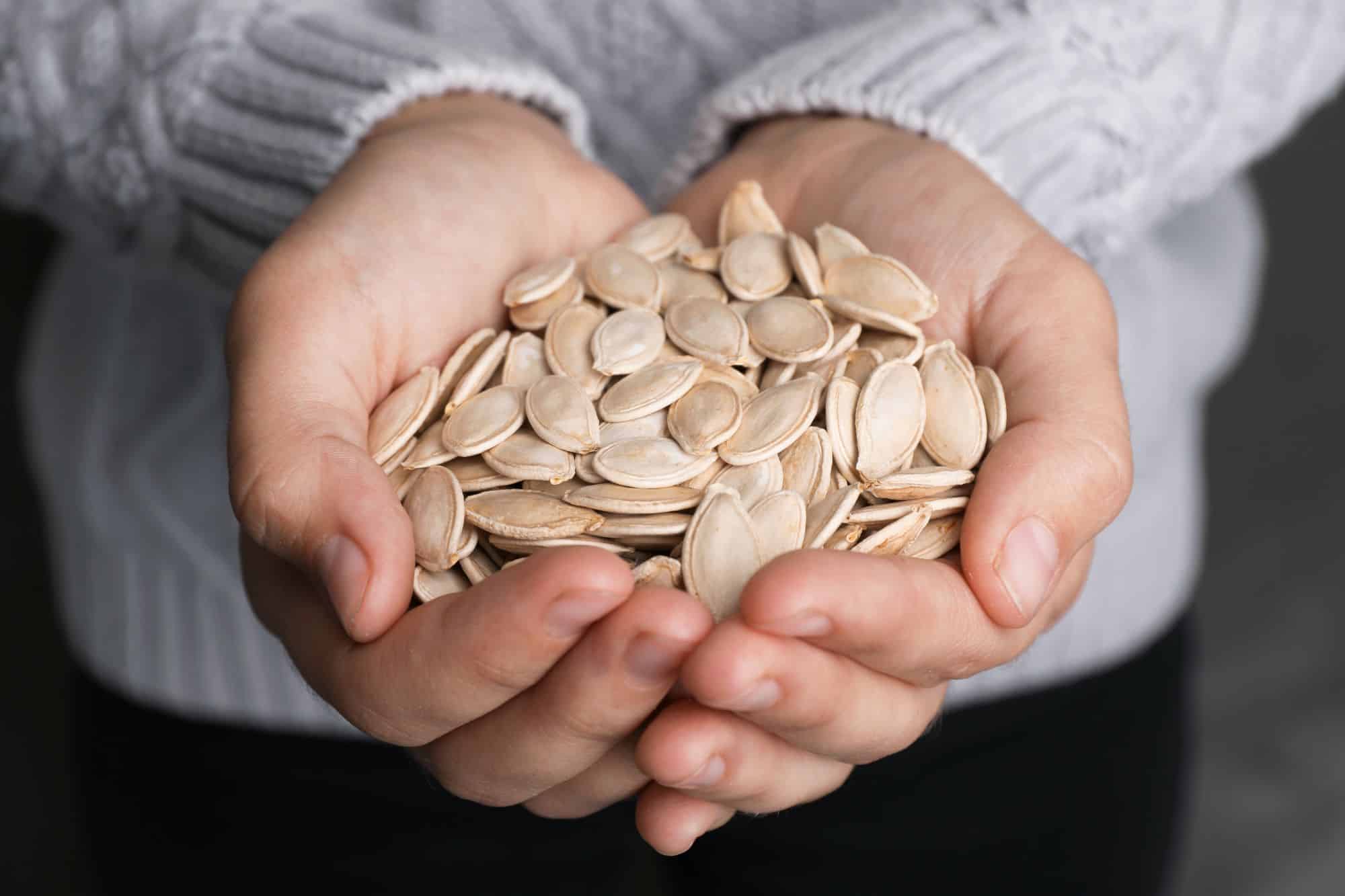
One of the easiest ways for gardeners to save money is to harvest and store seeds from their gardens. It’s easy. It’s fun. And harvesting and storing seeds is a tradition that goes back for many centuries.
Fall and early winter is when you harvest and store seeds. For many gardeners, it’s the final activity of the garden season. Harvesting and storing seeds is a bittersweet way to say goodbye to one gardening season and look forward to the next one.
You’ll be in good company when you start planting your stored seeds at the dawning of a new spring!
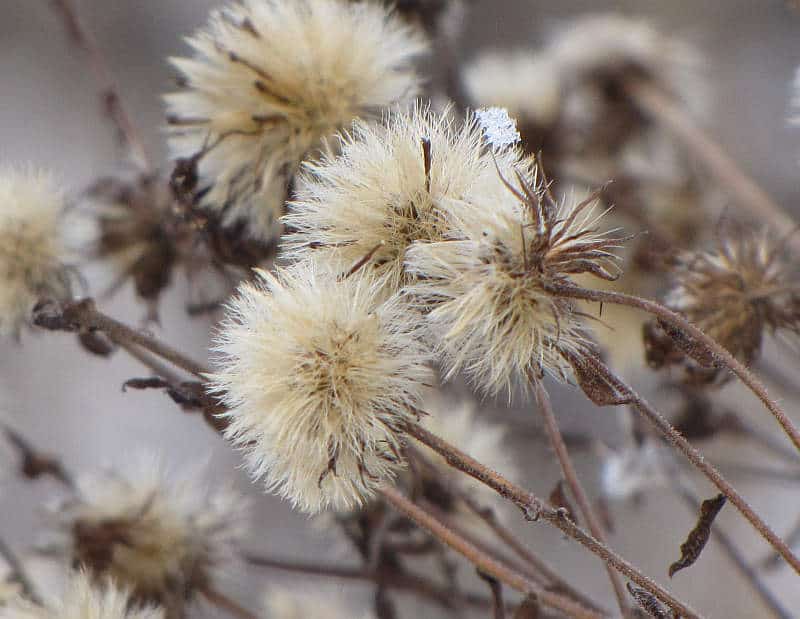
How to Properly Harvest Seeds
Harvesting your seeds is easy. You can get it done in these three steps:
1. Let the Plants Go to Seed
Simply let a plant’s flowers go to seed. Think of a flower as a seed factory—because that’s exactly what it is. Leave the spent flowers on the plant so it can set seeds. Then, let the seeds dry on the plants. Don’t pluck them off before they are completely dry. And resist the temptation to eat those that can be easily eaten.
2. Remove Pods, Seed Heads, or Capsules
Clip the pods, seed heads, or seed capsules on a warm and dry day. It is best if the seeds don’t get wet before storing them. Don’t forget to label the containers you put the seeds in if you are harvesting different types of seeds.
3. Harvest the Seeds
This is the part where you remove the seeds from their attachments. And by attachments, I’m talking about everything but the seed itself, such as the filaments, pods, or capsules that contain seeds.
To remove fly-away filaments, put the seed heads in a paper bag that contains some pebbles and shake the bag. Pour out the contents of the paper bag on a flat surface and let the filaments fly away. You can then pick out the pebbles so that only the seeds are left behind.
Separating pods and capsules from the seeds is also easy. All you need to do is to pry or pinch them open to expose the seeds. You may then screen the content to separate the seeds from whatever pods are remaining.
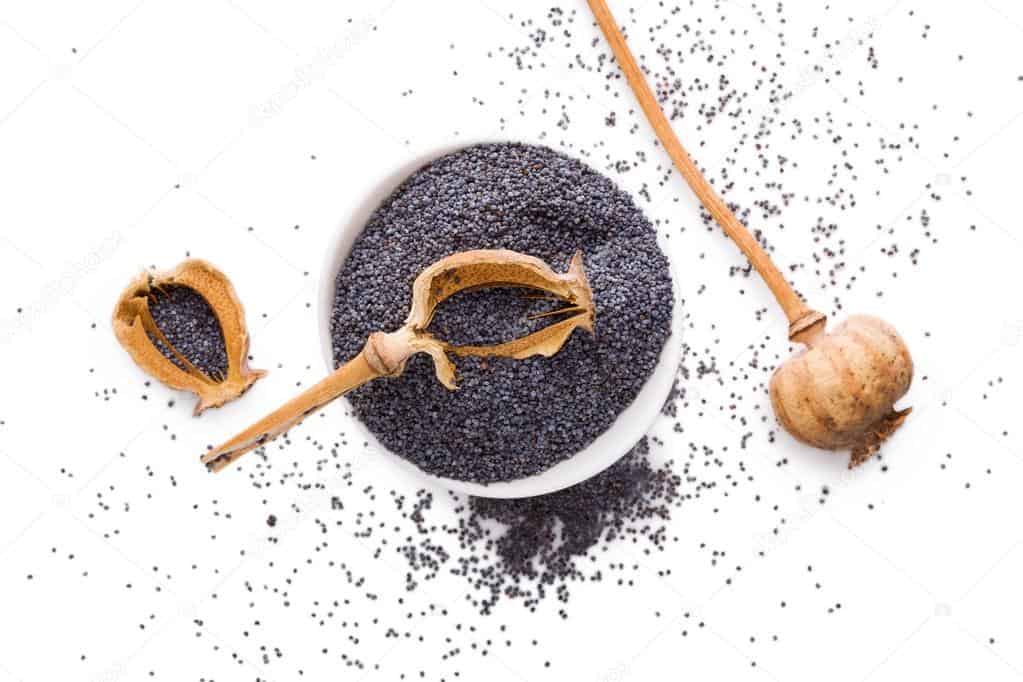
How to Properly Store Seeds
Be it vegetable seeds, flower seeds, or tree seeds, the storing process is similar for all types of seeds. The first and most important thing you need to do is to make sure the seeds mature fully before harvesting and collecting them. Otherwise, the seeds might not last through the storage process.
When collecting seeds, check if there they are coated with gel, like it is with tomato seeds. Although the gel serves as a source of nutrients for the growing seed, you don’t need it there for storing the seeds. Especially since moisture is one of the things that can make your seeds not last through the winter.
To remove the gel coating, pour the seeds into a container (like a glass jar) along with some water. Seal the container with the lid. Once or twice per day, shake the container. You may also stir the contents of the container if you feel the seeds are too delicate. This process breaks down the gel, making it easy for you to rinse it off.
Drying the Seeds
Next comes the drying. As you might have imagined, we are trying to remove all the moisture from the seeds to keep them from trying to germinate during the storing process. Drying the seeds also makes the seeds inhabitable for microorganisms.
Once the seeds have no gel coating and are bare, you can spread them out on a thin parchment paper and leave them to dry. The proper temperature for drying the seeds is about 60 degrees to about 96 degrees. Temperatures outside this range can be harmful to the seeds. Remember, we are trying to keep the seeds in good condition for as long as possible.
A food dehydrator can be of help in drying your seeds. Just make sure you use a very low heat setting. A temperature higher than 96 degrees F. can damage the embryo of a seed. A seed that has been exposed to too much heat will not germinate.
After the seeds are dry, allow them to cool. The next step is to prepare them for storing.
Storing Seeds
Put the dry seeds into a container that will hold them for the storage period. For this purpose, you can use seed storing envelopes placed inside a seed storage box. Just make sure that whatever container you are putting your seed in is dry and airtight. If you are storing seeds from different plants, make sure to label the containers with plant names and harvest dates.
For a single winter season, all you need to do is to keep the containers in a dark and cool place of about 60 to 65 degrees. (A basement closet works great.) The reason for the darkness is that seeds tend to germinate when they see light.
If you are storing your seeds for multiple winter seasons, however, read on.
Storing Your Seeds for More Than a Year
When you are storing your seeds for more than a year, keep them dry and cool at about 40 degrees Fahrenheit or lower.
Investing in cold storage for your seeds is a fine idea. You can also use the same refrigerator where you keep your food, but this comes with some disadvantages. For instance, the temperature range that many people keep their refrigerated seeds is 35 to 40 degrees. Some foods might not handle this temperature range as well as the seeds would. That is why cold storage for seeds could be a nice investment.
Also, many people keep their seeds in freezers. This comes with its disadvantages, too. One of them is that your freezer must be able to maintain a consistent temperature of -20 degrees to -15 degrees. But since many people open their freezers often, keeping the temperature within that range could be an impossible task.
If you do store seeds in a freezer, make sure to put your seed envelopes in an airtight container.
How Long Can Your Seeds Last in Storage?
Among people who harvest and store seeds, there are reports of successful germination of some seeds after decades of storage. Despite this, it is best to store seeds for a maximum of 5 years, depending on the types of seeds and the storage conditions.
Most annual flower seeds exceed their viability after 1 to 3 years. Perennial flower seeds can maintain their viability for up to 4 years.
Determining how long vegetable seeds would last, on the other hand, can be quite tricky. This is because the amount of natural oils in various vegetable seeds often differs. The more oil there is in a seed, the higher the likelihood of it going bad.
Having mentioned that, alliums, chives, parsnips, and corn have higher natural oil content in their seeds, so they may not last for more than two years. You may also add peppers, Swiss chard, leek or onion seeds, beets, parsley, and pole beans seeds to this category.
Lettuce, Asian greens, rutabaga, tomatoes, and cucumbers can last for three years. Turnip and radish seeds can germinate after four years. Cabbage, broccoli, Brussels sprouts, kohlrabi, and cauliflower may last for up to five years. But for vegetables like broccoli, you need to be careful when saving them. You need to learn how to save broccoli seeds and understand the procedure before you practice it.
Harvest and Store Seeds: The Enemies of Seed Storage
Throughout the storage period, there are three crucial things from which you need to protect your seeds. When one or more of these factors is present, your seeds could end up not germinating as they should. These enemies are heat, moisture, and light.
Let’s repeat that. Heat, moisture and light are the enemies of seed storage. As long as you keep your seeds away from these three enemies, they should be in good condition to grow whenever you are ready to plant them.
Get Your Seeds Ready for Planting
Your adventure to harvest and store seeds is almost over. Now it’s time for springtime planting! Bring out your storage containers from wherever you put them, but don’t open them yet. Place them somewhere in a room and leave them there to warm up to room temperature.
The essence of this process is to avoid a rapid temperature change that could allow moisture to condense on the inner walls of your containers.
Happy growing! If you have saved some vegetable seeds and want to learn a super-efficient way to grow veggies, consider growing a Square Foot Garden.
In no time you will be saving and swapping seeds with other gardeners, and your gardening experience will reach a whole new level of enjoyment.
Home Garden and Homestead is a proud member of the Amazon Affiliates Program. When you click on a link and buy a product from Amazon, we receive a small commission. Thanks for supporting this website!


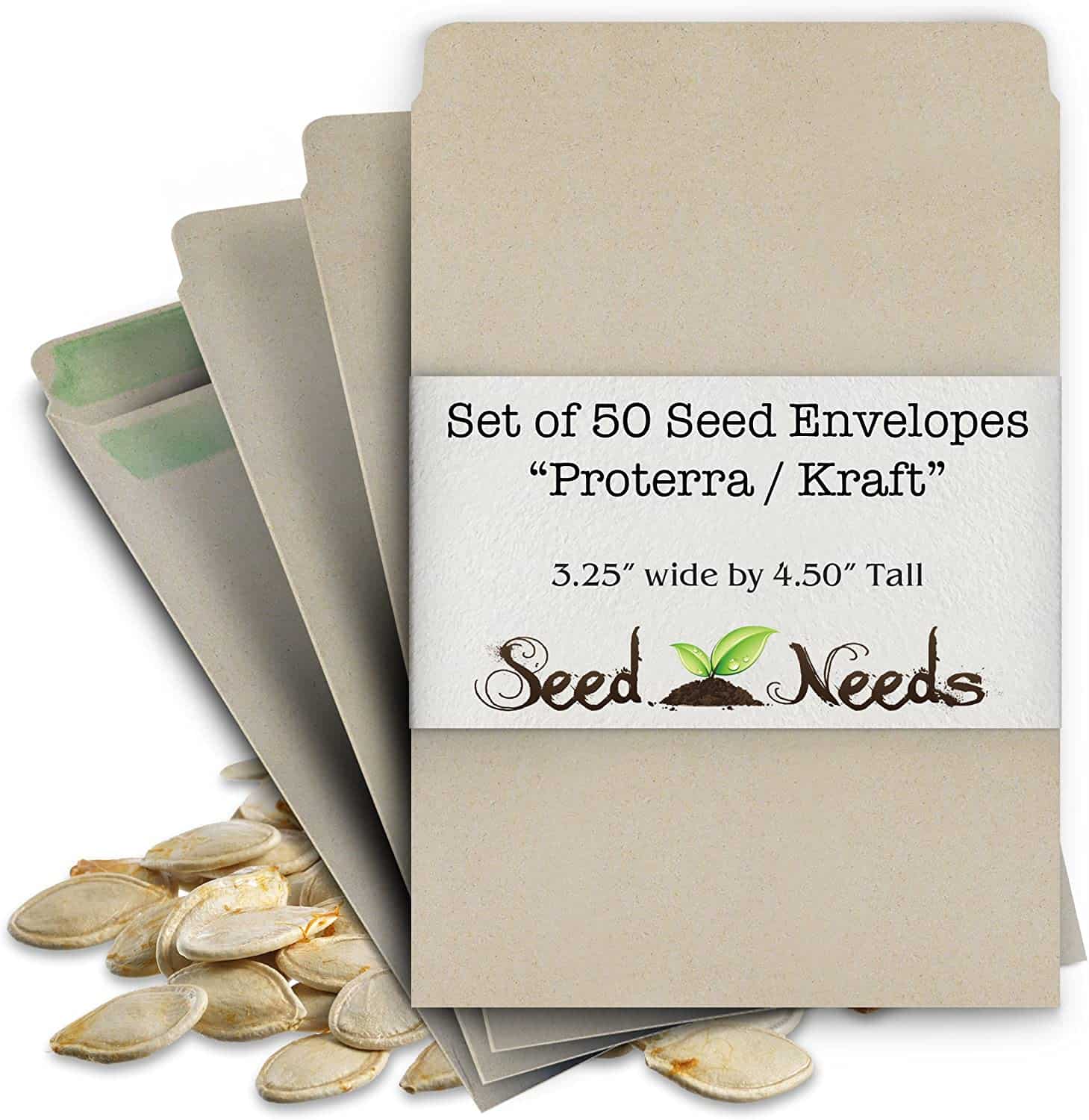
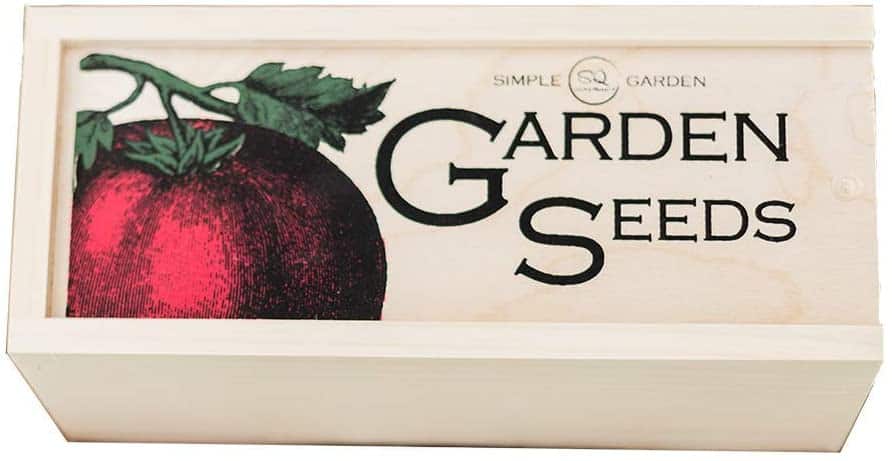
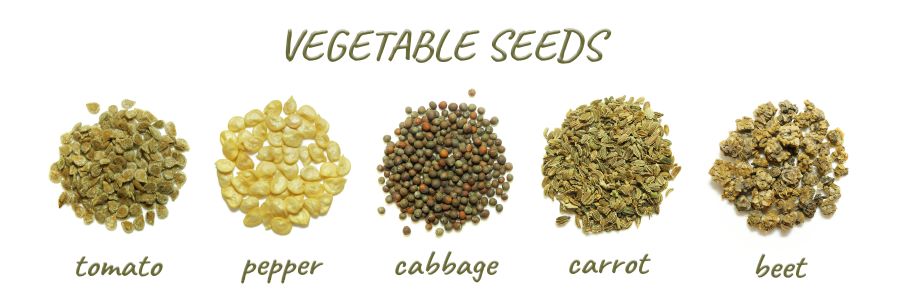


You say to let them flower then get the seeds after. But what about veggies like cucumber, tomato, etc.? the seeds are inside the fruit correct?
Dawn–
You’re right. Many vegetables produce seeds inside the fruit. In that case, you need to remove the seeds from the fruit, rinse them with water, and let them dry out. Then store them in a cool dry place for planting next spring.